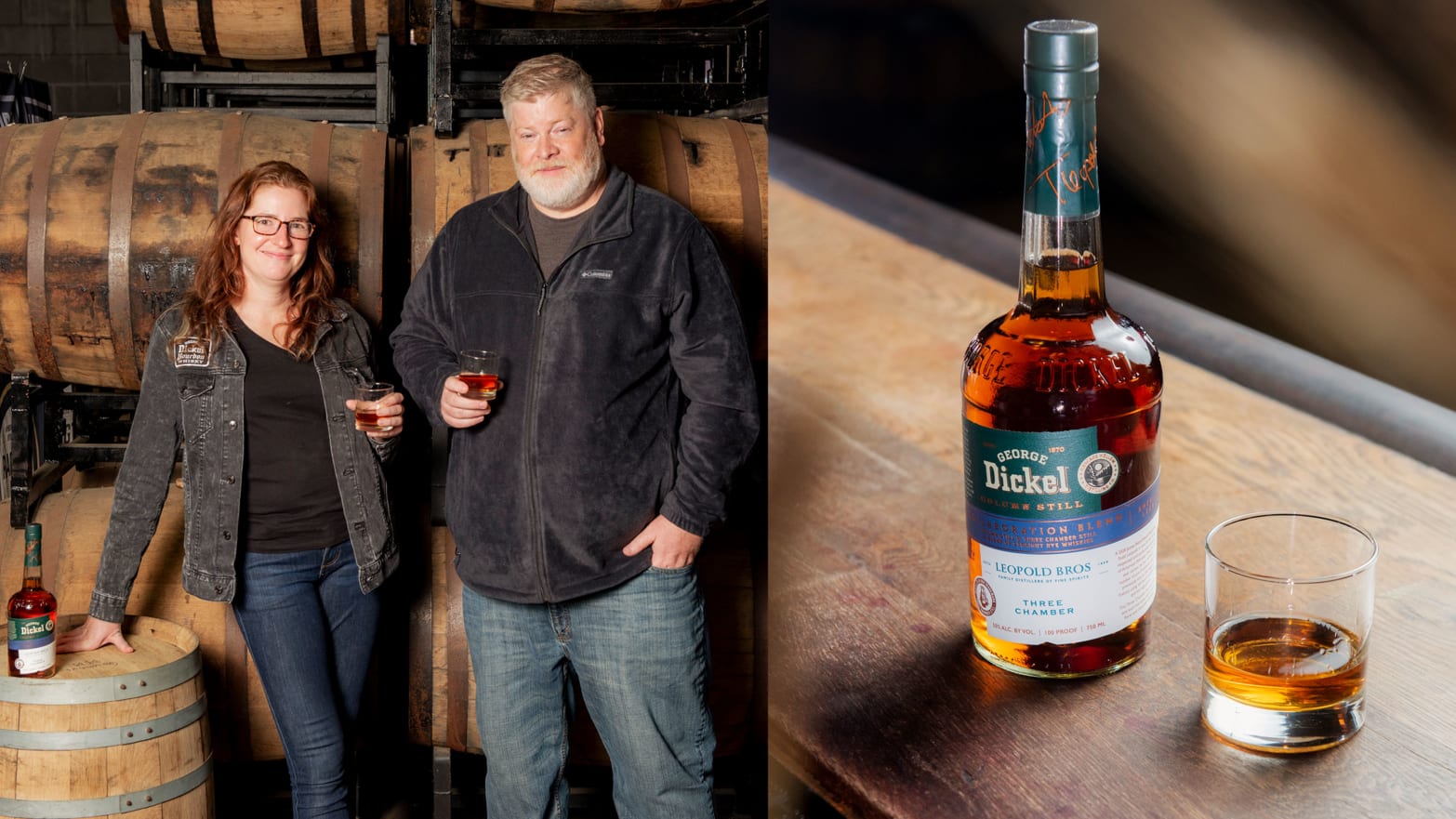Jason LeCras
“It was the best phone call ever,” says Nicole Austin, general manager and distiller at Cascade Hollow in Tennessee, which makes George Dickel Whisky.
On the other end of the line was Todd Leopold, half of the Leopold Bros., a craft distillery in Denver. During the course of their conversation Leopold had asked, matter-of-factly, “you don’t make rye, do you?” He suspected not. He knew that Dickel sold a rye whiskey, but that this was sourced from a large whiskey distillery in Indiana. His question was met with a second or two of silence. Then Austin said, “I’ll call you tomorrow.”
As it turns out, Dickel did make rye. They’d been quietly distilling their own rye for some years, attempting to duplicate the Indiana rye with experiments starting well before Austin came on board in 2018. This test rye had never been released—the team felt they had been unsuccessful in cloning the Indiana flavor profile—and so Austin had in her warehouses a number of casks, unloved and with a fate uncertain.
“Wow, this is a beautiful whiskey,’” she thought when she first tasted it. “But I didn’t know what I wanted to do with it. Then Todd called me. And I was, like, this!”
“This” turned out to be a collaboration between the two distillers to make a unique rye. That act alone is close to unprecedented. Dickel is owned by Diageo, a $100 billion company that’s sitting on 10 million barrels of aging Scotch whisky. Leopold Bros was founded in 1999 as an offshoot of a brewery in Michigan before moving to Denver. It has “several thousand” barrels of aging whiskey.
Leopold, as it happened, was looking for a lighter style of rye made on a column still for a very specific reason: he wanted to blend it with his rye, which is made on a historic three-chamber still. His whiskey was released this past spring after aging for four years. (Read about the saga of Leopold’s three-chamber still here.)
The jury of liquor historians is still out over whether whiskey produced on the three-chamber still in the pre-Prohibition era was widely bottled and sold on its own or was used chiefly for blending.
Leopold argues for blending. He says it wouldn’t make much sense to sell the pure three-chamber rye on its own, as the stills are impressively inefficient. Running from early in the day until late, Leopold can produce just two barrels a day. “The three-chamber is 20 feet tall and five feet in diameter, and if you took that same amount of copper and put it into a column, you could get 100 barrels a day,” he says.
But this unique still produces a robust and intensely flavorful whiskey, which could be blended to give a lighter whiskey more body and depth. (In much the same way, blended Scotch, along with rums from Jamaica, Barbados and elsewhere, are typically a mix of distillates from pot stills and column stills.)
Leopold cited a 1936 book that outlined the set-up at the Hiram Walker plant in Peoria, Illinois, in which a three-chamber still was situated adjacent to column stills, with all of them producing rye whiskey. Why would they do that? “It’s not an accident. We’re looking at historical precedent—the Scottish and Irish way of handling whiskey—of being able to work with these different flavors to come up with a flavor of your own.”
Leopold shipped some of his rye to Austin, who set to blending different ratios of the two whiskies. She finally settled on one blend that seemed to work, and Leopold was very happy with it. In the pure three-chamber rye, “some of the flavors were too concentrated to be able to pick out,” Leopold says. But when blended with the column the flavors became more evident. “It was very, very eye opening.”
The result? George Dickel x Leopold Bros. Collaboration Blend. More than 5,000 cases will be released nationwide this month.
The new whiskey marks several firsts: apparently, it’s the first time a major liquor conglomerate has paired up with a craft producer as co-equals. The two brands have equal real estate on the label, and each retain their own brand identity on the bottle. (For legal reasons, Dickel purchased the rye from Leopold Bros., who will also receive a percentage of the overall proceeds.)
This also marks the first time anyone outside Cascade Hollow will have a chance to taste the rye made there. And for those who were unable to get a bottle of Leopold’s three-chamber rye when it was released earlier this year (or during the second limited release recently announced), this will be the first time they’ll be able to get a taste of this once-extinct whiskey style.
Austin, who has a background in craft distilling, hopes to build collaborations with other small distillers in the future. It’s the liquor lions laying down with the lambs, and the moment seems ripe. Craft liquor is being taken increasingly seriously by aficionados, and legacy distillers are looking at ways to stay relevant in a rapidly shifting whiskey environment. (See: microbrews eating away at the margins of macrobrews.) Larger distillers have been acquiring smaller competitors as one way to manage the evolution; collaborations between the two may mark another route.
Look for this novel whiskey offspring in a store near you. The George Dickel x Leopold Bros. Collaboration Blend will have a suggested retail price of $109. That’s a lot for a bottle of whiskey. But you might consider it a deal for a pairing of two elusive rarities.

